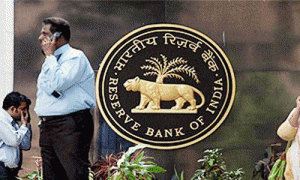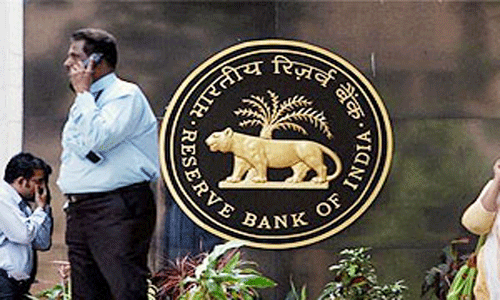Bottom Line: Government indicates low interest rate while the RBI keeps status quo. Homebuyers are now confused…
 Aditya Rana, a Pune-based textile engineer was planning to buy a house in the new fiscal. The much anticipated interest rate cut is what has been postponing his decision. He expected the rates of borrowing to come down in the new fiscal year after so much hype over India entering into a new era of low interest rates.
Aditya Rana, a Pune-based textile engineer was planning to buy a house in the new fiscal. The much anticipated interest rate cut is what has been postponing his decision. He expected the rates of borrowing to come down in the new fiscal year after so much hype over India entering into a new era of low interest rates.
However, the quo status on repo rate has dampened his spirit. Today, like many of other homebuyers, he is rather confused as to whether this is the right time to buy the house or should he wait for more rate cut ahead.
“There has been repeated news on low interest rate regime and home for all with competitive cost of borrowing. But I feel the Reserve bank of India is either not in sync with the realities of India’s housing market or contradicting with the government’s long-term goals. It is anyway very disappointing for average homebuyers for whom the present rate of borrowing added with the rent till possession is really troublesome,” says Rana.
Contradicting signals
The government is signaling low interest era while the RBI quo status on Repo Rate is contradictory
The high interest rate amounts to low sentiment of homebuyers in present market
Homebuyers confused whether to wait for more rate cut or accept the reality of 8+ borrowing cost
Expected inflation due to monsoon uncertainty and GST transition keeps the RBI hawkish
Most of the homebuyers as well as the other stakeholders of India’s housing market share the sentiments of this homebuyers. The Reserve Bank of India has indeed surprised many while keeping the repo rate unchanged at 6.25 per cent at the beginning of the new fiscal year. Even a symbolic rate cut would have helped the market change its outlook towards the economy.
The RBI has also raised the Reverse Repo Rate to 6 per cent. Cash Reserve Ratio has remained unchanged at 4 per cent. Marginal Standing Facility Rate has been cut by 25 basis points. Now it stands at 6.5 per cent. GVA growth is projected to be 7.4 per cent in 2017-18 as compared to 6.7 per cent in 2016-17.
The RBI maintains that the repo rate has not been changed because there is an upward risk to inflation that is being anticipated, while growth appears to be turning positive in RBI’s view. The apex bank is basically focused on inflation and hence a neutral stance is being maintained. Some of the analysts also point out that the RBI is hawkish with the prospects of monsoon and the GST which could pose some uncertainty and imbalance to the economy.
However, the developers are not ready to accept this over-cautious stance of India’s central bank. They feel the RBI Governor Urjit Patel should have been more considerate to the larger issue of reigniting the wheels of the Indian economy where the real estate is a major contributor.
Pratik K. Mehta, MD, Unishire points out that the status quo on repo rate will be a dampener for real estate. Input costs are rising and margins are shrinking for developers and affordability is being hit for end users who might have to pay higher prices for homes with the increase in raw material cost and unless borrowing costs do not come down, there will be a challenge for buyers to make the investment.
“Already, the real estate market is affected with the demonetisation effect and sales have slowed down to an all time low and added to the affordability and higher costs, will make it even more difficult for an end user to afford a home,” says Mehta.
Ravindra Pai, MD, Century Real Estate is also surprised that the recent elections should have further emboldened the government to kick start growth.
“I really hope that the RBI cuts the interest rates by at least 25 basis points which would support the government initiatives around the Housing for All mission and benefits already announced by the PM,” says Pai.
Nikhil Hawelia, Managing Director of Hawelia Group feels despite of the fact that the sentiments are turning positive and the overall thrust of the government is to create additional stocks of affordable housing, the RBI seems to yet live with the mindset of managing the shortages. The issue is not inflation but the expected inflation that is keeping the RBI cautious as of now.
“I do not agree with the very mindset of what if…What if monsoon is poor? What if the transition to GST era is initially painful? This is not how economy should be calculated. I mean are we so scared of expected road blocks of economy that we will not make business comfortable and incentivize the buyers till there is certainty all around,” questions Hawelia.
Beyond the cost & benefit analysis of the developers, the fact lies that the expected upward movement of inflation has indeed made the sentiments of the homebuyers go downwards. There have been much expectations of the borrowing cost to be lowered; something in the range of below 8 per cent. However, the quo status of the repo rate by the RBI has made them wary now.
This definitely is not the happy dawn of the new fiscal year that was supposed to change the sentiments of the last few years when the high interest rate was one of the deterrent in buying a new house. The buyers are hence questioning as to whether they should wait for some more time for the interest rates to come down or else they should learn to live with the reality of high interest rate regime.
Unfortunately, there is no clear answer to the homebuyers today. While the policy makers at the government level are indicating low interest rate the RBI stance suggests the contrary. Amidst these two confusing signals there is catch 22 for the homebuyers where high interest is making their home buying sentiments go low.
By: Ravi Sinha





